It's spotted lanternfly season again in Delaware. Find out how to get rid of the pesky bug
Unfortunately, for those of you looking for peace now that the kids are headed back at school, we’ve got another headache for you to deal with: the return of spotted lanternfly season.
If you thought coping with the end of summer and fighting the back-to-school shopping crowds was bad, wait until you remember how tedious it is to stomp on every spotted lanternfly making its way to your backyard.
But to eliminate some of that stress, we’ve got details on spotted lanternfly presence in Delaware and how to get rid of them.
What are spotted lanternflies?
Spotted lanternflies are a species of planthoppers native to China, first detected in America in Pennsylvania in September 2014, according to the United States Department of Agriculture (USDA).
Adult spotted lanternflies are about 1 inch long and a half-inch wide at rest. They have black heads and legs, yellow abdomens with black bands and two sets of wings — gray with black spots on top and red with black spots underneath. They look very different as juveniles, though. The youngest are small, round and black with white spots, and they develop red areas as they grow.
Eggs are laid in late fall on host trees and nearby smooth surfaces like stone, outdoor furniture, vehicles, walls, etc. When freshly laid, they have a gray, mud-like covering, while uncovered eggs appear segmented.
Although there are many factors that contribute to how fruitful an insect population will be, the spotted lanternfly’s presence depends on how many eggs the insect laid during winter and how rainy it is in the warmer months when they hatch.
If those eggs aren’t killed or the bug isn’t eradicated while it is a nymph, the early stages of life, the problem has already increased tenfold, said the Delaware Department of Agriculture, who added that they are harder to contain once they have wings and can fly.
Why are spotted lanternflies bad?
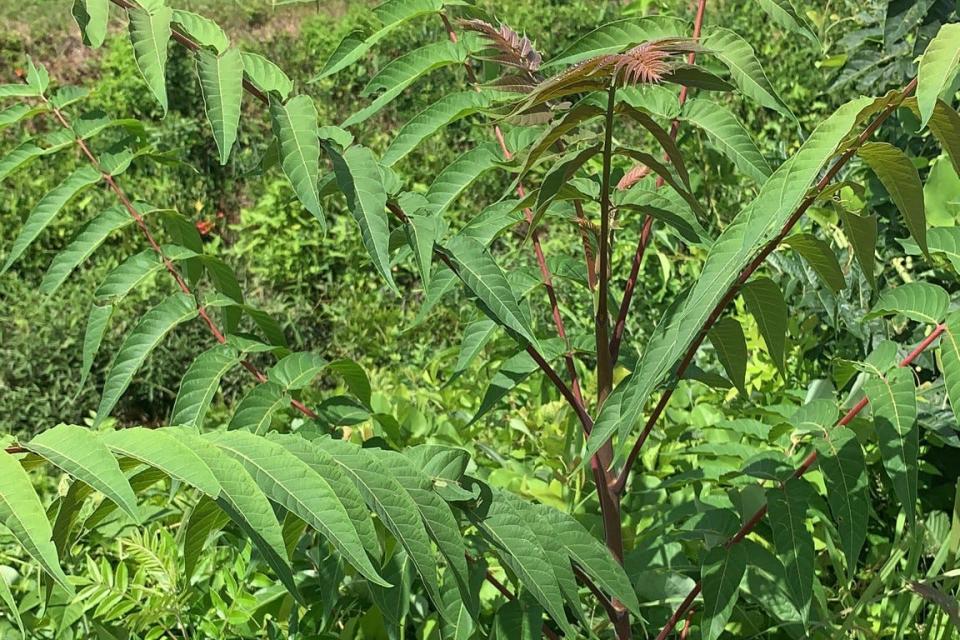
The species feeds on a wide range of trees, from walnuts to willows, but another invasive, tree-of-heaven, appears to be its preferred host. Egg masses are laid on the trunks and branches of many medium-to-large-sized trees, often near the top. The eggs hatch in the spring and the nymphs then leave the tree in search of food.
Trees with "weeping wounds" are a tell-tale sign of spotted lanternflies, according to the DDA. The insect pierces the tree trunk to feed and excrete sugar water on and around the feeding site, sometimes leaving a gray or black trail. It may also attract wasps, ants or other insects.
In heavily infested trees, branches and, eventually, the entire tree will wilt and die.
The spread of spotted lanternflies could seriously impact the country’s grape, orchard and logging industries, according to the USDA.
Spotted lanternflies in Delaware
The spotted lanternfly first appeared in New Castle County in 2017, leading to a quarantine in the county in 2019 followed by a quarantine in Kent County in 2020. In 2022, Sussex County was quarantined.
Quarantine in this case means "any person conducting business for a commercial company, a municipality, or a government agency that requires movement of any regulated item within or from the quarantine area must have a permit," according to the DDA. Permits are obtained by training and passing an online test.
This year, the department has spotted a shift in the spotted lanternfly population across the state.
“Previously, New Castle County and, more specifically, the Wilmington area, was heavily infested, but now we are seeing a larger population in Middletown, Smyrna, and Dover. There are still spotted lanternfly in Wilmington, but not as dense,” said Katie Bielicki, DDA Spotted Lanternfly project coordinator.
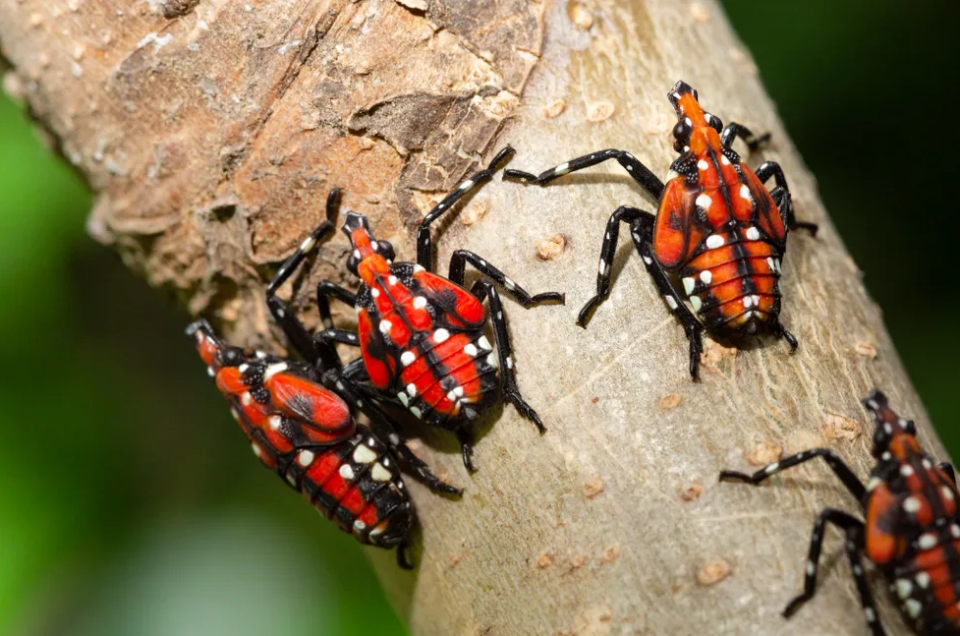
Sussex County is also experiencing increasing populations of spotted lanternflies Bridgeville, Georgetown, Milford, Seaford and around the beaches.
The shift in local spotted lanternfly population mainly stems from the Delaware Department of Agriculture Spotted Lanternfly Program’s work scraping egg masses and treating egg masses with soybean oil, said Stacey Hoffman, chief of community relations for the department.
In 2021, the staff scraped 74,740 egg masses and treated 11,490 egg masses with soybean oil, preventing 5, 173,800 spotted lanternflies from hatching in the spring of 2022. In 2022, 32,628 egg masses were scraped and 7,779 were treated with soybean oil, resulting in a population decrease of 2,424,420 this year.
“Destroying the egg masses is key to reducing the population and we can tell from where the egg masses were scraped that the populations have decreased in those areas,” said Hoffman.
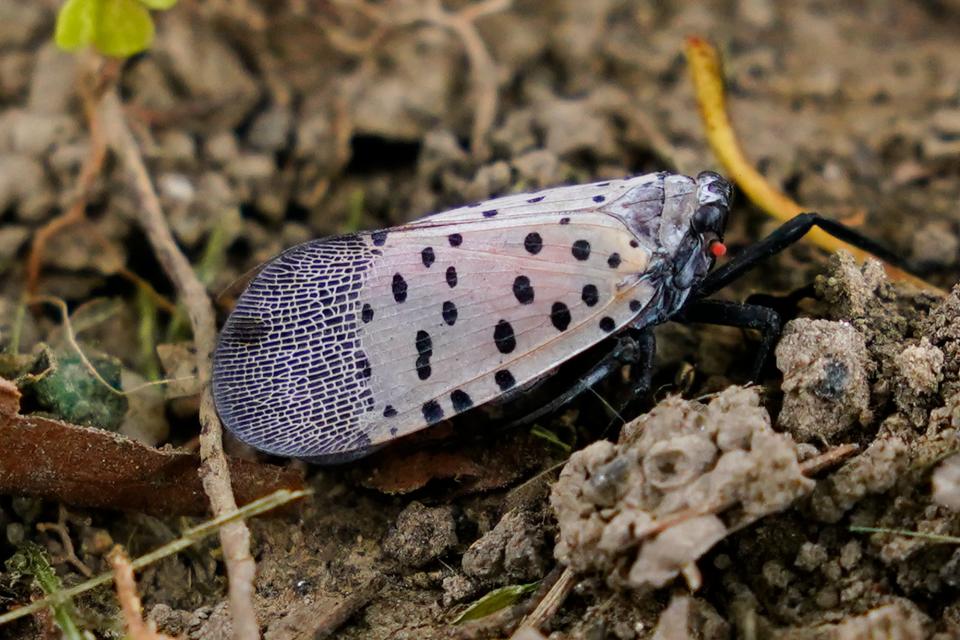
Due to a cold snap in late spring, tree-of-heaven continued to bloom into late June, leaving the DDA unable to treat the early-stage nymphs with insecticides in order to protect pollinators.
Instead, staff used backpack vacuums to suck up first- through third-stage nymphs found on tree-of-heaven where they were doing research, resulting in a further decline in this year’s population.
The Delaware Department of Agriculture Spotted Lanternfly Program also surveys, traps and monitors populations of the insect around vineyards and orchards, which are susceptible to damage from the species.
Spotted lanternflies have been found in and around local vineyards but have not impacted the crop to date, said Hoffman.
End-of-summer fun in Delaware: 12 fun things to do with kids before schools reopen in Delaware
How to get rid of spotted lanternflies
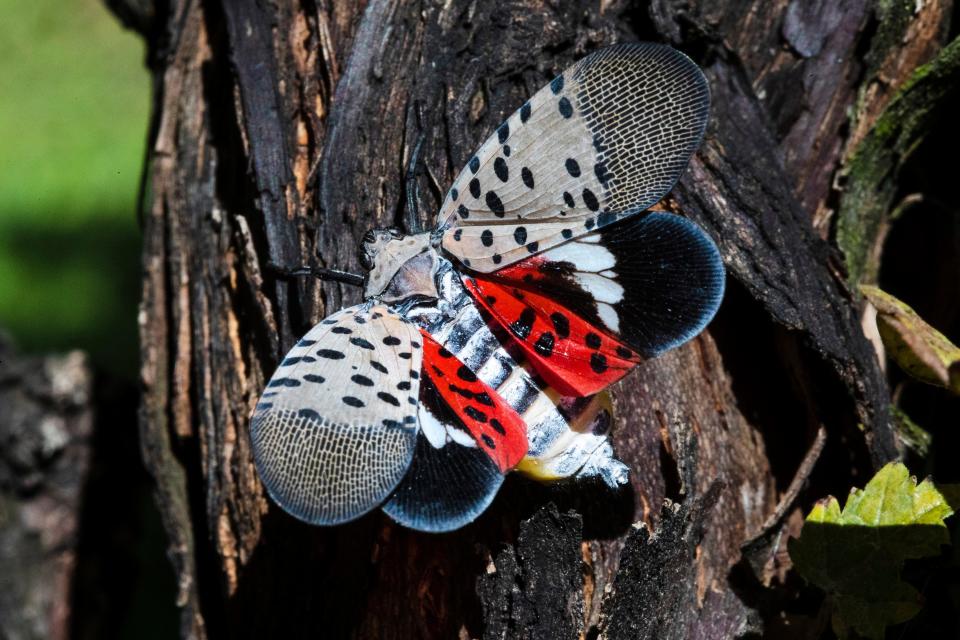
Homeowners are encouraged to do their part by educating themselves about the species and taking steps to eradicate them from their property.
Killing spotted lanternflies of all life stages is the best thing Delawareans can do to stop their spread. Squash them between May and November and destroy their egg masses the rest of the year.
“The female spotted lanternfly are beginning to lay their egg masses that will overwinter into next year, so it is critical that everyone squash all of these invasive pests that they find and scrape any egg masses to help reduce next year’s population,” said Bielicki.
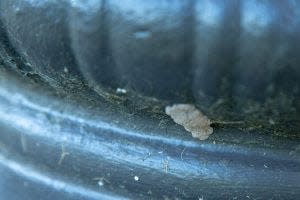
The Department of Agriculture recommends keeping the Delaware Resident Spotted Lanternfly Compliance Checklist in your vehicle and checking it each time you travel.
Eliminating tree-of-heaven, often found in industrial parks, unmanaged or vacant areas and along highways and railways, can also help reduce the population. In addition, between now and early September is the best time to apply insecticide to susceptible trees.
The Department of Agriculture is asking people to report spotted lanternfly sightings near Dover Air Force Base or in Sussex County so they can determine how the insects are moving and which transportation pathways are being utilized.
Reporter Shannon Marvel McNaught contributed to this report.
Got a tip or a story idea? Contact Krys'tal Griffin at kgriffin@delawareonline.com.
Spotted lanternfly breakthrough: University of Delaware researchers may have found a way to get rid of damaging lanternflies
Watch out for these at the beaches: It's jellyfish season at the Delaware beaches. Types you'll see and what to do if stung
This article originally appeared on Delaware News Journal: How to get rid of spotted lanternfly in Delaware & why they are so bad

